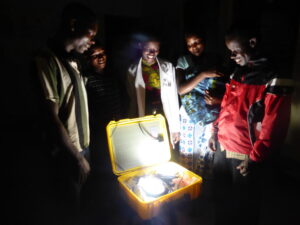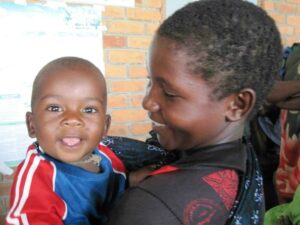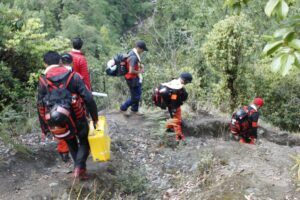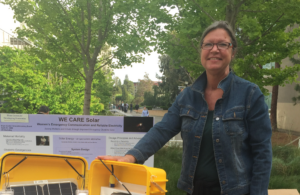David Bank wrote this article about the UN Foundation Powering Healthcare workshop; it was originally posted on Impact IQ on May 7, 2012.
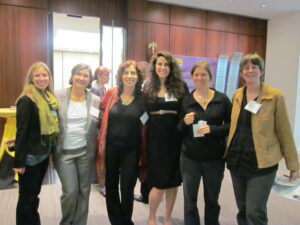 “Chance favors the connected mind,” is Steven Johnson’s short answer to the question posed by his book, “Where Good Ideas Come From.”
“Chance favors the connected mind,” is Steven Johnson’s short answer to the question posed by his book, “Where Good Ideas Come From.”
Leading minds in global health and sustainable energy connected last week at “Powering Health Care in the Developing World” in Washington, D.C. The UN Foundation and the World Health Organization brought together more than two dozen organizations, including the U.S. State Department, the US Agency for International Development and the United Nations Development Program. Sure enough, the workshop brimmed with good ideas for electrifying the approximately 300,000 health facilities in the developing world that don’t have access to reliable power.
The United Nations has proclaimed 2012 the Year of Sustainable Energy for All, and a series of high-level convenings will peak next month at “Rio + 20″ — the 20th anniversary of the 1992 Rio conference that effectively set off the sustainability movement. In the lead-up to Rio+20, global players large and small are making commitments to Sustainable Energy for All at the UN Foundation’s website.
The Powering Health Care workshop made a start at putting health facility electrification on the Rio+20 agenda. More than a dozen presentations made clear the tremendous opportunity to enable lighting, communications, medical devices and tele-medicine at frontline health facilities in resource-starved parts of the world. The convergence of improving technology and falling prices for sustainable energy, new low-power LED lighting and medical devices, ubiquitous mobile phones, almost insatiable demand for power and the increasing urgency to meet the 2015 “Millennium Development Goals” is generating a groundswell of activity.
I had the privilege of being a participant-observer at the workshop. One of my hats was as a board member of We Care Solar, the social venture that produces and distributes the award-winning “Solar Suitcase” as an immediate, interim solution for powering health facilities, specifically as a way to reduce deaths in childbirth among both mothers and newborns. My other hat was as a journalist now chronicling (at Impact IQ) just such new opportunities to tackle major social challenges with innovative approaches and new financial models.
Dr. Laura Stachel, the ob-gyn who co-founded We Care Solar, graphically described the debilitating effects of energy poverty on health delivery, particularly the life-and-death situations in which women with complications in labor arrive at clinics and hospitals without even light to see by.
To illustrate the transformative effect of even modest lighting solutions, she introduced Dr. Jacques Sebisaho from the Democratic Republic of Congo, who said patients, including the sick and women in labor, generally come in only when their work day is done, that is, when it’s getting dark. “We have lost so many women, so many children, so many people have died, because we didn’t have light,” Dr. Sebisaho said. Two weeks after he returned with a Solar Suitcase, cholera broke out in his village. With light, they were able to monitor patients through the night. “For the first time in this island’s history, nobody died from cholera,” he said. “95 percent of the survival was due to the fact that we had light.”
In my presentation, I tried to synthesize some of the takeaways from the workshop. I’ll just summarize here and return to some of these themes in continuing coverage.
MAKE CONNECTIONS. Many health professionals remain unaware of the new possibilities in sustainable energy, and many energy practitioners don’t fully appreciate the strategic value of focusing on health care facilities as an anchor for the provision of electricity.
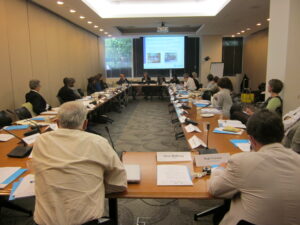 UNLOCK VALUE. New technologies, new financing methods or simply new approaches make possible better outcomes at lower costs. Poor people already pay high costs for low-quality energy — as much as $38 billion a year, according to Richenda van Leeuwen, who heads the UN Foundation’s Energy Access initiative. Even problems such as the theft of panels and light bulbs reported by Walt Vernon, head of M+LNB Engineering, who as installed solar in hospitals and health facilities in Haiti and elsewhere, are really evidence of high demand, the key to a growing market.
UNLOCK VALUE. New technologies, new financing methods or simply new approaches make possible better outcomes at lower costs. Poor people already pay high costs for low-quality energy — as much as $38 billion a year, according to Richenda van Leeuwen, who heads the UN Foundation’s Energy Access initiative. Even problems such as the theft of panels and light bulbs reported by Walt Vernon, head of M+LNB Engineering, who as installed solar in hospitals and health facilities in Haiti and elsewhere, are really evidence of high demand, the key to a growing market.
TRACK THE INEVITABLE. Global megatrends — a growing middle class in emerging and ‘frontier’ markets, the shift in spending power by women driving investments in health and education — mean that more and more people are becoming willing to pay for that unlocked value.
DRIVE THE AGENDA. Dr. Carlos Dora of the WHO laid out the goal: “Put health care energy needs in the spotlight.” The energy needs of health facilities is not nearly on the agenda now, said Elaine Fletcher, a communications officer with WHO. The UN’s Every Woman, Every Child initiative has gathered 217 commitments around health childbirth, including in some cases significant country-level increases in health funding. But the word ‘electricity’ appears only once (Rwanda has committed to 100% electrification of its health clinics).
IT’S GETTING BETTER. The presumption that problems are getting worse is not warranted — many things are getting better and could get markedly so with additional investment and innovation. Many developing countries are not on track to meet MDG5, to reduce maternal mortality by 75 percent between 1990 and 2015, but even in maternal mortality, success in some places has been stunning, with reductions of 5 percent or more each year, and global reduction on the order of 40 percent or more since 1990. Only a few dozen laggards are holding back even more dramatic progress. And other MDGs, such as the provision of clean drinking water, have been met even ahead of the deadline.
FOCUS ON SOLUTIONS. One person’s problem is another’s opportunity. Rick LaRue of Solar Electric Light Fund mentioned Trojan Battery’s efforts to develop the market for off-grid energy storage devices. Others described low-power medical devices such as digital X-rays and super-cheap refrigerators. Jim Meszaros of the PR giant Weber Shandwick, who is handling the Sustainable Energy for All campaign, noted that nobody would have believed a plan to deploy more than five billion mobile phones in a decade, but we’re well past that now.
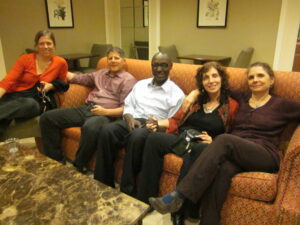 SCALE UP. The world is awash in capital, and it’s increasingly flowing to ‘frontier markets’ in the developing world and to products and services that show falling prices and increasing demand. That confounds the prevailing assumption in the world of global health and economic development is that there’s a chronic shortage of money. Vijay Modi of Columbia University’s Earth Institute reported that with comparative energy sources costing the equivalent of $3 per kilowatt/hour, and $30,000 per mile to extend the electricity grid, that provision of off-grid sustainable energy is becoming increasingly attractive to local entrepreneurs.
SCALE UP. The world is awash in capital, and it’s increasingly flowing to ‘frontier markets’ in the developing world and to products and services that show falling prices and increasing demand. That confounds the prevailing assumption in the world of global health and economic development is that there’s a chronic shortage of money. Vijay Modi of Columbia University’s Earth Institute reported that with comparative energy sources costing the equivalent of $3 per kilowatt/hour, and $30,000 per mile to extend the electricity grid, that provision of off-grid sustainable energy is becoming increasingly attractive to local entrepreneurs.
TELL STORIES. Credible data and investable deals can go a long way toward putting Powering Health on the global agenda. But compelling stories of success, such as Dr. Sebisaho’s, can harness people’s passion for progress.

